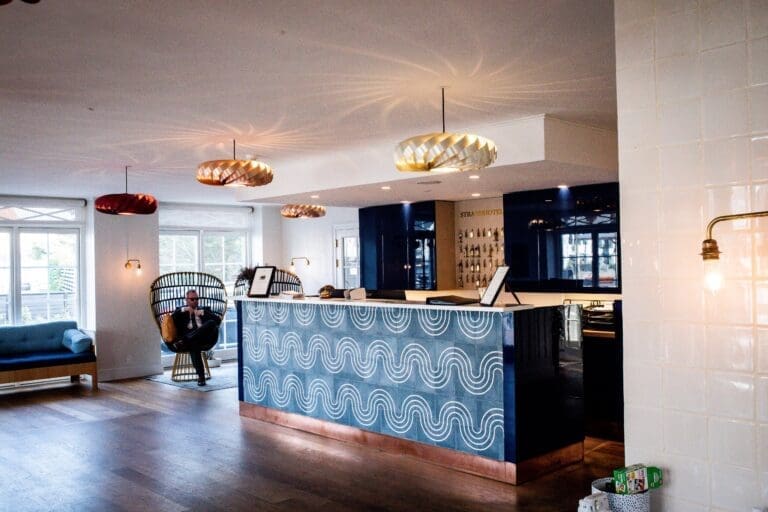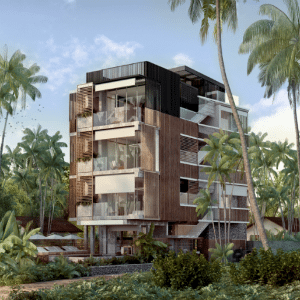 As we roar in the 2020s, what were once perceived as innovations and value-adds in hospitality will soon become expectations that you dare not omit from a quality hotel experience. Such is the course even for the boutique hotel, whereby properties falling under this banner were viewed a mere decade away with an alluring aura, will soon lose that lustre when travellers become more familiar with what these businesses offer.
As we roar in the 2020s, what were once perceived as innovations and value-adds in hospitality will soon become expectations that you dare not omit from a quality hotel experience. Such is the course even for the boutique hotel, whereby properties falling under this banner were viewed a mere decade away with an alluring aura, will soon lose that lustre when travellers become more familiar with what these businesses offer.
The novelty is gone, the ‘lifestyle’ concept is now mainstream, and we are about to enter the next phase of boutique hotels—where simply launching within this segment is not enough to garner sustained interest, because customers have already experienced something similar. Aside from new brand entrants, adding to this elevated level of competition are the numerous high-end apartments offered under the sharing economy umbrella that imitate many aspects of the lifestyle property.
So, in this soon-to-be overstuffed boutique market segment, how do hotels adapt so that guests don’t lose interest in any of these ostensibly great properties in favor of the ‘next big thing’? How do you innovate a boutique property so that its repeat revenue figures will always be a healthy contributor to the bottom line? Broader still, how do lifestyle hotels continue to reinvent themselves over the course of the next two or three decades so that guests never come to perceive such properties as tired, boring, stale or obsolete?
In essence, you need a plan with both tangible short-term goals and a clear vision for how that can be extrapolated over the long run. With a world of possible directions that one can take insofar as capital expenditures, operational improvements and outbound marketing campaigns, a worthwhile endeavor would be to deploy the principles of design strategy to help narrow the focus as well as project where that focus will lead to in the near future.
Brand strategy from the ground up
Design strategy is a term primary reserved for the graphic design industry, but after a quick definition, it should be apparent why it also applies to the hospitality industry—with specific reference to boutique hotels where design is such a critical point of differentiation.
My first encounter with this phrase came when I entered the world of advertising in the 1980s, only it wasn’t generally given such a niche classification and instead, was implied through the broader language of brand strategy and business planning. The classic model of how an agency develops the overall look and feel for any client’s marketing engine is to start with a logo (assuming a company name has been agreed upon or is already in use). It’s at this stratospheric phase where broad design ideas are shopped including how customers experience different colors and how certain fonts feel versus others. If you aiming for a wordmark, you stop there, or you can add some iconography to personify the brand.
Once the logo is locked, then you move onto the development of a mood board or a full-fledged brand style guide that acts as the rubric for all subsequent work, offering parameters so that all advertisements are intrinsically recognized as the company’s at first glance. Armed with a flashy new logo and some brand guidelines, it’s time to move to the next phase of ad concepts and iterative works based off of those approved conceptual designs.
Throughout these early stages, it is the agency’s creative director’s job to guide the strategic design conversation with the client, first by asking the right questions about what the brand represents but also about where the brand is going. Design strategy aims not just to deliver beauty in the here and now, but to keep a vigilant eye on the future as well. Marketing campaigns that proceed without a strategic business direction or design strategy are doomed to mediocrity as they’ll lack a firm plan for guided growth and nurturing brand advocacy while staying within the budget.
Avoiding Frankenstein
All too often I see hotels that lack design strategy in all manner of operations. It is hard to consider, after all, when managers are habitually bogged down by the daily minutia of running a property with so many moving parts.
You can feel it immediately when you enter a hotel where the public spaces have gone through several interior designers and several more hard goods suppliers who all contributed to different areas at different times. You feel it when you browse a brand.com where a new development team took over partway through but only reconfigured half of the pages. You feel it when you peruse a hotel’s marketing efforts across all channels where some feel harmoniously tiered while others are outliers.
Something feels off, disorienting even. Our bodies are subconsciously primed for good design and it irks us when we encounter a ‘Frankenstein’ such as one of these three general examples. So named after Frankenstein’s monster in the Mary Shelley novel, it’s an amusing piece of jargon once you consider how combining parts from different bodies may create an entity that’s stronger than any single component but nonetheless rejected by society.
So much of the guest experience nowadays is about creating a strongly positive impression, that you cannot afford to present your product in an incongruent manner. It will detract from the desired emotional journey and ultimately prevent you from attaining that much-vaunted wow factor that you get when you stay at a property that actually has its act in gear.
With its particularly keen awareness for how physical design can impact those people who are interacting with a space, the boutique and luxury segments must stay increasingly conscious as to how design trends are changing as well as how brands operating in this niche can effectively move in sync with such an evolution. This is, after all, one of the key reasons why customers choose these properties—and are willing to pay substantially more per night—over business-oriented or select-service hotels. Impressive lobbies, nuanced décor touches to the corridors and artfully furnished guestrooms, to cite three areas, must all be planned at the same time to match the brand meaning and the brand vision.
Look for Part 2 of this feature tomorrow which will go through a step-by-step guide of what elements of boutique hotels you can incorporate for your property and what to be mindful of for future programs.
































